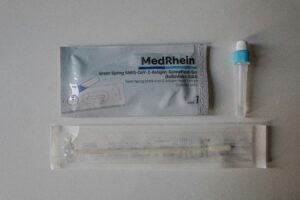Does your company work with nearshoring in Mexico? Excellent! This business strategy offers significant benefits, including more flexible labor laws and lower production costs. Any company would want to operate under this model.
However, some companies encounter problems when transferring their products to North America. Don’t worry; in most cases, these problems are due to mistakes made by the companies themselves. Export product tagging errors happen more often than you might think. This raises a fundamental question.
Is nearshoring in Mexico genuinely a better option than manufacturing overseas in Asia?
When we delve into the comparison, especially against importing finished goods from Asia, the answers may surprise you.
- The close border relationship between Mexico and the U.S. is a huge advantage; shipping goods from a next-door neighbour is fundamentally simpler and faster than managing logistics from halfway around the world
- Harmonization treaties between Mexico and the United States also help. They reduce the paperwork required to import medical devices.
- Thanks to their proximity, regulatory aspects and the respective implementation have less impact in Mexico than in countries further away.
Operating in Mexico can bring many benefits to your business. However, it is essential to understand the regulations to avoid obstacles.
Why is labelling a fundamental regulatory requirement?
In nearshoring Mexico, complying with all relevant US regulations isn’t just a formality. It’s critical. One aspect that might seem minor but is essential is medical device packaging and labelling.
- The FDA Leads the Way: In the US, the FDA mandates specific label information for medical devices. This includes contraindications, clear instructions for use, and unique production and serial identifiers.
- Looking to the EU: It’s not just the US. Regulations like the EU’s Medical Device Regulation (MDR, Regulation 2017/745) also impose strict labelling requirements, highlighting the global expectation.
- International Standards Reinforce This: Widely recognized standards like ISO 15223-1:2021 (symbols) and ISO 13485:2016 (quality management) consistently emphasize the vital role of accurate labelling and standardized symbols.
This creates a comprehensive legal framework governing labels for products imported from Mexico. For efficient binational manufacturing, adhering to these rules is crucial for minimizing border waiting times and ensuring market access.
What Your Labels Must Include for Mexico Nearshoring
To navigate this landscape successfully, labels must incorporate all legally required elements. Here’s what you typically need:
- Product Identification: Both the technical name and the brand/trade name.
- Manufacturer Details: The full name, physical address, and country of the manufacturer.
- Product Lifespan: Expiration date, clearly formatted (e.g., YYYY-MM-DD or MM-YYYY).
- Handling Instructions: Specific storage conditions, like temperature ranges or humidity limitations.
- Usage & Safety: Clear instructions for use, necessary warnings, and any contraindications.
- Standard Symbols: Recognized icons indicating aspects like sterility or biocompatibility, as per standards like ISO 15223-1.
The Unique Device Identifier (UDI) is particularly crucial. It’s the backbone for tracking medical equipment moving from Mexico into the US market.
How Robust Labelling Powers Supply Chain Traceability
Traceability refers to the ability to track a product throughout its entire lifecycle, from creation to delivery and beyond. Getting these right hinges on accurate labelling. Those details on the label? They’re far more than just information:
- The cornerstone of traceability is often a unique code, like a UDI (Unique Device Identifier). That tracking number is significant. Think of it as your quick way to find specific products, whether you’re doing a regular check or, more critically, during an urgent recall.
- But accurate traceability isn’t just about knowing where a product is. It’s also about knowing what’s happened to it along the way. That means checking if it stayed within the right storage conditions, like proper temperature and humidity levels.
- For companies using nearshoring in Mexico to build stronger global supply chains, prioritizing accurate and compliant labelling is non-negotiable. Clear labels specify essential storage and packaging conditions.
Well-designed information panels do more than track; they integrate smoothly with ERP systems, unlocking significant management efficiencies. Additionally, accurate labelling significantly streamlines customs procedures when importing products, resulting in a reduction of lead time.
Labelling errors that undermine product safety and regulatory compliance
Simple mistakes here can be surprisingly common, but they carry serious risks. When Information Panels are inaccurate, they don’t just create confusion. They can directly compromise product safety and put your business at odds with regulatory standards. This makes careful attention to tagging essential.
- For example, if labels do not include critical information such as storage instructions, the consequences could be dire. Devices could end up being stored in an environment that would cause irreparable damage.
- Language issues can also affect the entire export process. After all, medical devices are required to have information in English. If this is not the case, there will be significant delays at customs.
- Ambiguous instructions for use are rejected because they pose a danger to patients. Medical devices must come with clear instructions to avoid these kinds of problems.
- There are often discrepancies in the formats and symbols used by the FDA and COFEPRIS partnership.
- Any Compliance Tagging hiccup during your nearshoring Mexico operation can cause severe delays. The fallout can be even worse – companies can face hefty fines and lose significant money on transportation and potential legal battles
But it’s not just about the immediate financial hit. There’s a real risk that Mexican companies could lose their valuable opportunity to export to the United States altogether in the future. That’s why precise and compliant labelling is essential. You must ensure that every medical device you manufacture carries all the required information by law.
How RexMed ensures accurate and compliant labelling
Once your medical devices land in the US, FDA compliance becomes non-negotiable. RexMed steps in as your key partner on this field. We take the worry out of compliance, ensuring your products meet every relevant regulation. Stop wasting valuable time and money on procurement headaches.
- With more than 20 years of experience behind us, RexMed gives you the confidence that your medical devices are sourced safely and meet the highest quality standards, letting you focus on what matters most: your business.
- You can trust our import process; we strictly follow ISO 13485 and are fully compliant with all key regulations, including CT-PAT, CGMP, FDA, and COFEPRIS
- We take care of all the documentation, so your products arrive safely at our Texas warehouse al El Paso Tx, FOB. And, if required, we can deliver to your desired distribution center.
· You won’t have any problems at customs because we specialize in labelling medical devices. After many years in the import and export business working with customs, we have developed a deep understanding of the solutions we can offer our customers in processing goods through the border.
Want to know more? You’re in the right place. In the Contact us section, you can ask any questions you may have. If you are seeking a reliable partner to source high-quality medical devices with full regulatory compliance and operational efficiency, nearshoring with Mexico through RexMed is the ideal solution.






